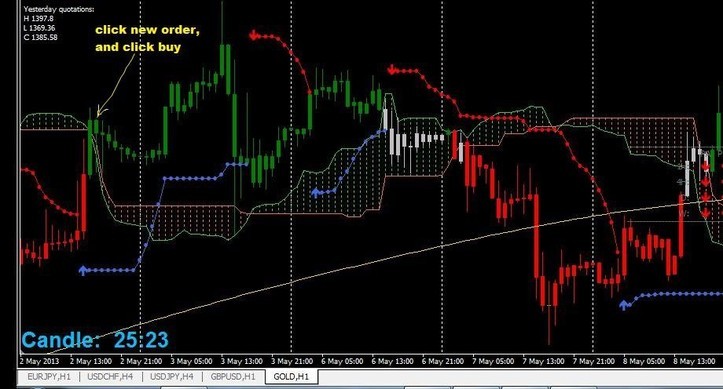The Basics of our Successful Trading System
Post on: 4 Сентябрь, 2015 No Comment

There is a simple maxim when it comes to stock investing: buy low, sell high. Along with this important maxim, is a commonly enunciated myth involving stock trading: it»s impossible to determine when a stock has peaked or when a stock has hit bottom.
We have developed trading strategies and stock trading systems that have resulted in much larger returns and more palatable risk and return ratios than is normally or traditionally found around the stock market.
The idea is simple in essence, and our previous results demonstrate the effectiveness and usefulness of our stock trading system.
Even during those period of times when a stock market is volatile and stock trading trends become more difficult to plot, our trading system and overall stock market strategies have proved effective.
Step #1: Read the Market Trend
We have a timing system that gives us the general trend of the market. These stock market timers can have different “speeds” in detecting the stock market upturns and downturns. In general, a “fast” timer might give you better results but higher withdraws from your trading account. The opposite is true for a “slow” timer. Our timer is of a SLOW type: not many changes during the year, therefore not many trades.
In our tests, and real-life experiences, we’ve noticed that a delay of 2-3 days in taking action accordingly with the trend-change has negative effects on the results, therefore if you missed a trend-change by more than 2 days you should use great care in selecting stocks. The safest plan is to wait until the next trend-change.
In your private Subscriber’s area you’ll see the latest trend signals for US and International Indexes. You can add your own Stocks, Indexes and ETF in the Trend Manager and apply our proprietary algorithm to determine the current Trend.
Step #2: Select Stocks for Your Portfolio
Stock selection criteria help you select certain types of stock that can perform very well in the type of stock market detected by the Trend Signal. The filters criteria follow the very simple concept of continuing the trend: if a stock has started on an UP-trend it would go in that direction for a period of time.The EXIT strategy IS crucial in deciding the winners from losers!
Go to Barchart web site, and free of charge, you can see the TOP 100 performers on a particular day. On the day the trend signal from our web site changes(let»s say from DOWN to UP), choose (go long) TOP 5 or TOP 10 stocks that have the Average Volume over 100k. Those stocks would be your portfolio until the next change in the trend. Don»t forget to apply some money management strategy or you WILL LOOSE ALL OF YOUR MONEY, guaranteed! NOTE: Please make sure that the stocks chosen are part of the Index for which our FREE Trend Signal has shown a change in trend: i.e, don’t choose Nasdaq stocks when Dow Jones signals has changed.
If the signal from our site say DOWN you have two(2) options: you can sell short the TOP 5 or 10 stocks from the the same list, OR you can BUY some special mutual funds/ETFs, as per our article Special Mutual Funds .
You can use the same idea of selecting some momentum stocks by using other free web sites: MSN Money . Barchart Sectors . Google Stock Screener . Just make sure the selected stocks ARE part of the right sector/index that has changed the signal!
Another very simple way of taking advantage of our market trend signals, is to use the underlying ETFs for Indexes to create a portfolio: please see the sample portfolios posted under Trend Signals page.
Step #3: Apply a Money Management Strategy
A very sound and tested money management and portfolio management strategy is essential!
This is a very important component of our stock trading system because without proper money management, a successful stock trade cannot save you from the damage of a string of straight stock trading losses.
Timing system + Stock Selection Criteria+ Money Management = Successful Stock Trading S ystem
In our portfolios, we normally select stocks that have greater liquidity (over 100k shares/day), so it shouldn’t be a problem to have your order filled by the broker. For shorting stocks, if you choose to (some investors prefer to stay in cash during a downtrend) you will have to check with your broker to see if they are available.














